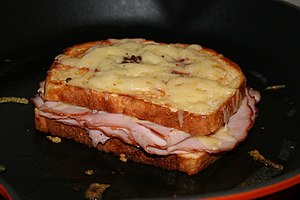On the contrary, a fast delivery of a pun is an indication of a quick wit. I think word play is rather clever.Op-Ed Contributor
Pun for the Ages THE inglorious pun! Dryden called it the “lowest and most groveling kind of wit.” To Ambrose Bierce it was a “form of wit to which wise men stoop and fools aspire.” Universal experience confirms the adage that puns don’t make us laugh, but groan. It is said that Caligula ordered an actor to be roasted alive for a bad pun. (Some believe he was inclined to extremes.)
Addison defined the pun as a “conceit arising from the use of two words that agree in the sound, but differ in the sense.” “Energizer Bunny Arrested! Charged with Battery.” No laugh? Q.E.D.
Puns are the feeblest species of humor because they are ephemeral: whatever comic force they possess never outlasts the split second it takes to resolve the semantic confusion. Most resemble mathematical formulas: clever, perhaps, but hardly occasion for knee-slapping. The worst smack of tawdriness, even indecency, which is why puns, like off-color jokes, are often followed by apologies. Odds are that a restaurant with a punning name — Snacks Fifth Avenue, General Custard’s Last Stand — hasn’t acquired its first Michelin star.
How have the great comic writers regarded puns? Jane Austen puns once, in “Mansfield Park,” and it serves to impeach the moral character of the offender. Mark Twain’s first book, “The Celebrated Jumping Frog of Calaveras County,” enamored reviewers with its punlessness. There are “no contortions of words,” said a London paper. “His fun is entirely dependent upon the inherent humor in his writings.” The 20th century’s finest humorist, P. G. Wodehouse, doesn’t use them.
Shakespeare, however, does. Many are bawdy: puns operate, after all, on double entendre. Yet the poet is guilty less of punning than wordplay, which Elizabethan taste considered more a sign of literary refinement than humor; hence “puns” in seemingly inappropriate places, like a dying Mercutio’s “Ask for me tomorrow, and you shall find me a grave man.”
The true punster’s mind cycles through homophones in search of a quip the way small children delight in rhymes or experiment babblingly with language. Accordingly, the least intolerable puns are those that avoid the pun’s essential puerility. Richard Whately, Archbishop of Dublin, was a specialist. He could effortlessly execute the double pun: Noah’s Ark was made of gopher-wood, he would say, but Joan of Arc was maid of Orleans. Some Whately-isms are so complex that they nearly amount to honest jokes: “Why can a man never starve in the Great Desert? Because he can eat the sand which is there. But what brought the sandwiches there? Why, Noah sent Ham, and his descendants mustered and bred.”
Whately shows us that it is the punner himself who gives his art a bad name, by so frequently reaching for the obvious. Nothing vexes so much as a pun on a name, for instance. Yet even these can rise to wit if turned with finesse. Jean Harlow, the platinum-blond star of the 1930s, on being introduced to Lady Margot Asquith, mispronounced her given name to rhyme with “rot.” “My dear, the ‘t’ is silent,” said Asquith, “as in Harlow.” The writer Andrew Lang asked his friend Israel Zangwill if he would take a stand on an issue. Zangwill wrote back: “If you, Lang, will, I. Zangwill.”
Why do puns offend? Charles Lamb, a notorious punster, explained that the pun is “a pistol let off at the ear; not a feather to tickle the intellect.” Surely puns silence conversation before they animate it. Some stricken with pun-lust sink so far into their infirmity that their minds become trained to lie in wait for words on which to work their wickedness. They are the scourge of dinner tables and the despised prolongers of office meetings, some letting fly as instinctively as dogs bark and frogs croak, no longer concerned even with drawing applause; they simply can’t help themselves.
I asked a friend of mine, an inveterate punster, whether he punned while on dates. “Sure, I pun on dates,” he replied. “On prunes and figs, too.” And well he might, considering the similitude between puns and fruit flies, both of which die practically the instant they are born, but not before breeding others.
But low as puns may be, they have been known to appeal to the loftiest minds. Samuel Johnson hated puns, but his friend Edmund Burke, whose intellectual powers daunted even Johnson, was notorious for pun-making (e.g., “What is [m]ajest[y], when stripped of its externals, but a jest?”) Still, Burke was conscious of his sin, revealed in an incident recorded in a friend’s journal: “Lord Mulgrave called to Burke one day at our table with a ‘so, Burke, you riot in puns now Johnson’s away.’ This made good sport for my lord and for the company, but Burke changed color and looked like Death.”
With Burkean contrition, I confess that in a Thai restaurant not long ago, following my company’s attempt to order three curry dishes, I suggested that we not get “curried away.” Punning, it seems, like every non-deadly sin, is easier to excuse than to resist.
Joseph Tartakovsky is a student at Fordham Law School.
Rescue centres along the Costa del Sol report that their intake of animals has almost doubled in the last year, leaving them full to overflowing with some 1,000 abandoned dogs - and unable to care for any more.
Although it is not always possible to be certain who owned the abandoned dogs, these figures and the experiences of animal welfare workers suggest that scores of Britons, defeated by the credit crunch, have simply flown home and left their dogs to fend for themselves in Spain.
Despite the UK's reputation as a nation of dog lovers, one rescue centre manager claimed that when it comes to abandoning pets "the British are the worst culprits".
Among the worst cases encountered were pets left tied to balconies or released at popular nature spots in the vague hope that a dog walker might find them and take them in.
"It's incredible," said Maria Stevens, kennel manager at the Adana animal rescue centre. "People find the time to pack up their furniture and other belongings and yet their pets' welfare is an afterthought."
At the centre in the hills above the resort of Estepona, more than 150 dogs are crammed into enclosures designed for only half that number.
"We simply don't have the room for many more and yet they keep coming," said Mrs Stevens, 47, explaining that until last summer an average of 90 dogs were held at the centre at any one time.
She pointed to Sally, a cocker spaniel with her nose pressed against the fence. "She's an absolute sweetie but she is suffering trauma after being found in the central reservation of the motorway near the airport. God knows what her owners were thinking."
Recently three small dogs were found in a boarded up villa on the outskirts of Estepona weeks after their British owners left because they could not keep up their mortgage payments.
"It was an incredible act of cruelty," said Mrs Stevens. "The dogs had been left some food and water but if a neighbour hadn't heard the barking and called us they would have eventually started eating each other before starving to death."
At the AAA rescue centre near Marbella, its administrator Celia Lago said: "It's always the same story. People have to go home to their countries because their dream life hasn't panned out here in Spain but it's the animals that suffer. And the British are the worst culprits."
Mrs Lago explained that British quarantine laws made it especially difficult for returning British expatriates to take their dogs with them. She said the pet passport scheme, which allows animals clear of rabies to be brought into Britain, can take up to seven months and cost £1,000 in vet and kennel fees.
"The Germans or Dutch just put their pets in the back of the car and off they go, but the Brits don't have that option," she said.
Her centre is currently caring for 200 abandoned dogs, and in the last two months it has dealt with a total of 300 dogs - almost double the number for the corresponding period last year.
If this trend continues, the centre estimates it could face an intake of up to 2,000 dogs in 2009 compared to 916 in 2008. Most of these, Mrs Lago said, were abandoned by expatriates.
An estimated million Britons have made their home on the Costas. But as unemployment reaches the highest in the eurozone and with the pound plummeting against the euro many are now returning home.
"That doesn't excuse the huge number of British people who just abandon their pets," said Mrs Lago. "A dog is like a member of the family. They wouldn't just leave their children behind would they?"
Animal lovers have already become distressed to see so many dogs roaming the streets. Susan Broadley, 60, a property management agent who has lived in Estepona for 27 years, rescued a dog that was in "a terrible state", coaxing it into her car. But, she said tearfully, it had to be put down.
“People don’t seem to realise that turning their dog out to fend for itself is a form of cruelty. It’s horrible and it’s happening more and more,” she said.


















